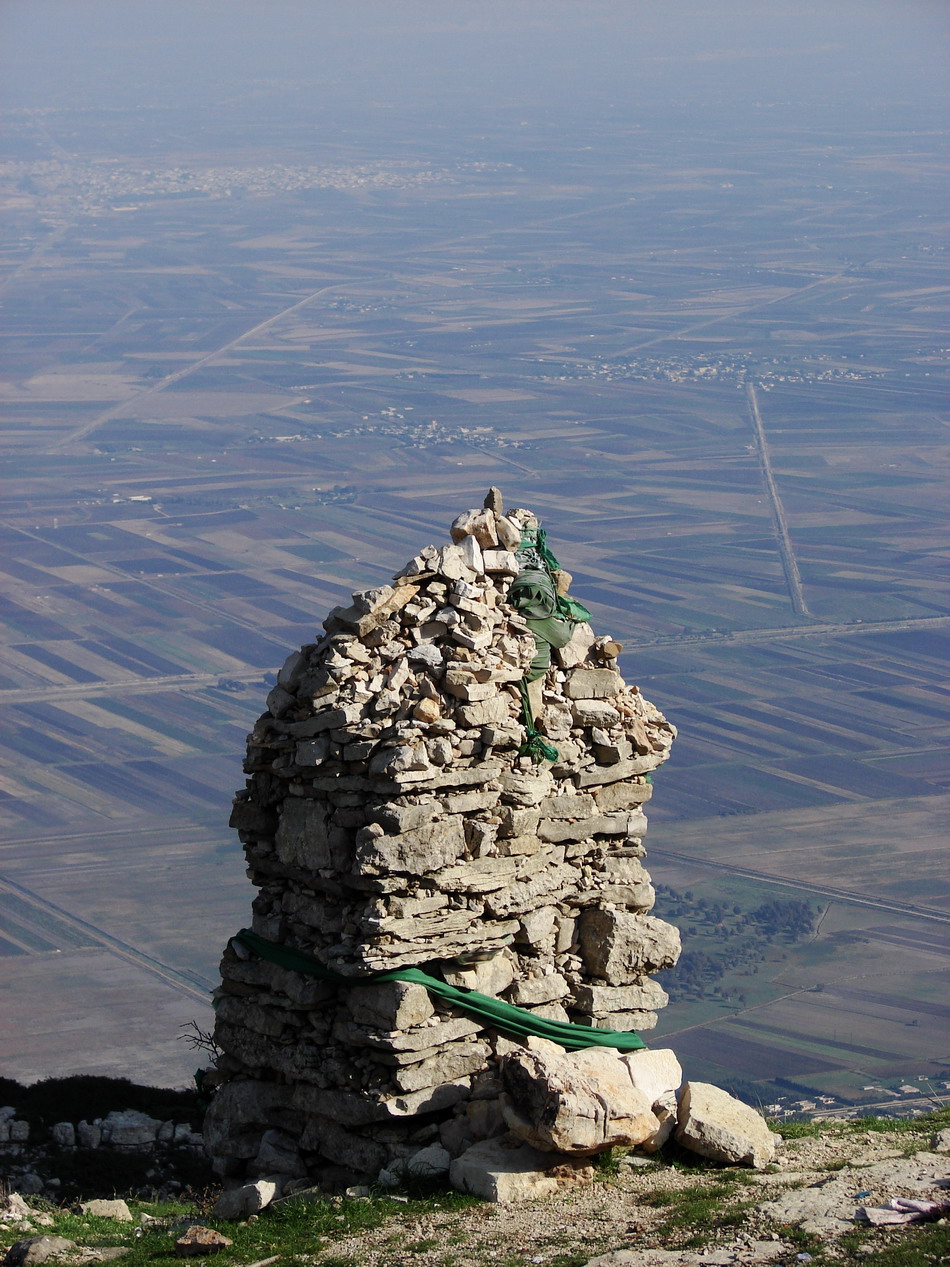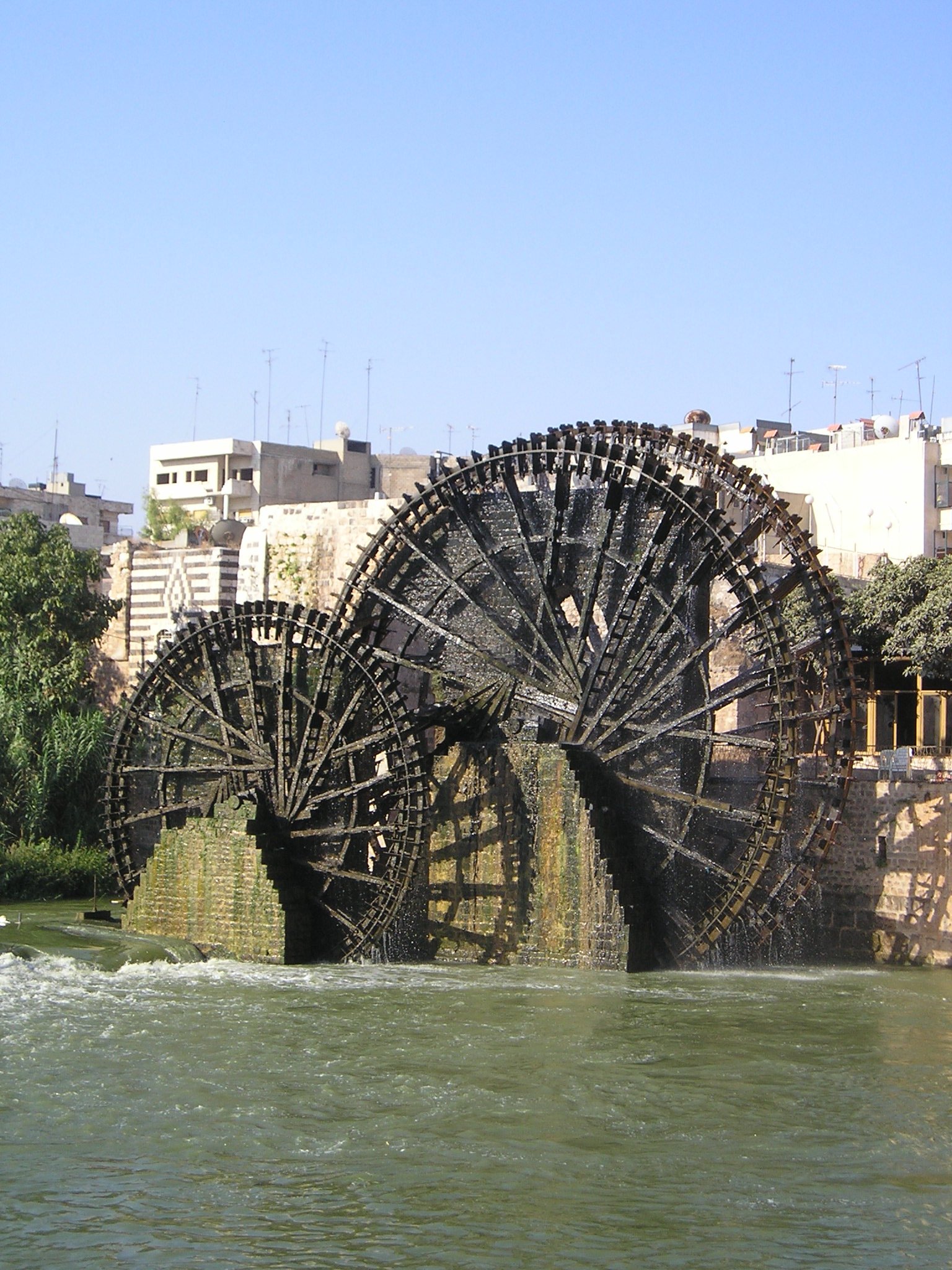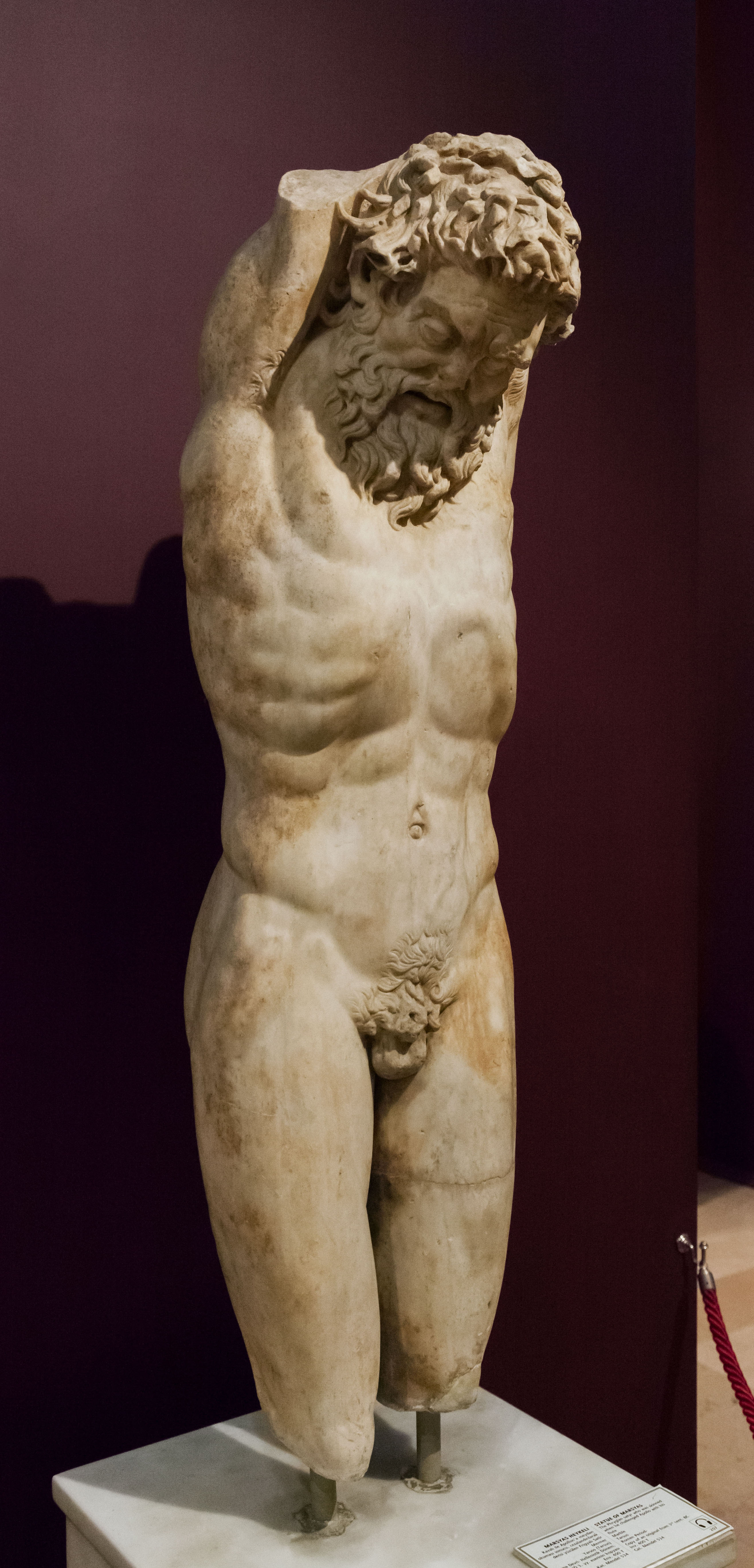|
Asi River
The Orontes (; from Ancient Greek , ) or Asi ( ar, العاصي, , ; tr, Asi) is a river with a length of in Western Asia that begins in Lebanon, flowing northwards through Syria before entering the Mediterranean Sea near Samandağ in Turkey. As the chief river of the northern Levant, the Orontes was the site of several major battles. Among the most important cities on the river are Homs, Hama, Jisr al-Shughur, and Antakya (the ancient Antioch, which was also known as "Antioch on the Orontes"). Names In the 9th century BCE, the ancient Assyrians referred to the river as Arantu, and the nearby Egyptians called it Araunti. The etymology of the name is unknown, yet some sources indicate that it might be derived from ''Arnt'' which means "lioness" in Syriac languages; others called it ''Alimas'', a "water goddess" in Aramaic. However, ''Arantu'' gradually became "Orontes" in Greek. In the Greek epic poem '' Dionysiaca'' (circa 400 CE), the river is said to have been named after ... [...More Info...] [...Related Items...] OR: [Wikipedia] [Google] [Baidu] |
Norias Of Hama
The Norias of Hama ( ar, نواعير حماة) are a series of 17 norias, historic water-raising machines for irrigation, along the Orontes River in the city of Hama, Syria. They are tall water wheels with box-like water collection compartments embedded around their rims. As the river flows, it pushes these water collection boxes under water, where they quickly fill up, then are driven up to the top of the wheel where they empty into an aqueduct. The aqueduct can carry the water to supply buildings, gardens and farmland. Seventeen of Hama’s original norias have been conserved. They are notable for their medieval origins, for their large number and for the enormous size of two of them - for nearly 500 years the tallest waterwheels in the world. In the 21st century Hama’s norias no longer provide a water supply but are celebrated as an example of advanced water supply technology in medieval Muslim societies and for the striking sights and sounds which they make as they turn. I ... [...More Info...] [...Related Items...] OR: [Wikipedia] [Google] [Baidu] |
Antioch
Antioch on the Orontes (; grc-gre, Ἀντιόχεια ἡ ἐπὶ Ὀρόντου, ''Antiókheia hē epì Oróntou'', Learned ; also Syrian Antioch) grc-koi, Ἀντιόχεια ἡ ἐπὶ Ὀρόντου; or Ἀντιόχεια ἡ ἐπὶ Δάφνῃ "Antioch on Daphne"; or "Antioch the Great"; la, Antiochia ad Orontem; hy, Անտիոք ''Antiokʽ''; syr, ܐܢܛܝܘܟܝܐ ''Anṭiokya''; he, אנטיוכיה, ''Anṭiyokhya''; ar, أنطاكية, ''Anṭākiya''; fa, انطاکیه; tr, Antakya. was a Hellenistic, and later, a Biblical Christian city, founded by Seleucus I Nicator in 300 BC. This city served as the capital of the Seleucid Empire and later as regional capital to both the Roman and Byzantine Empire. During the Crusades, Antioch served as the capital of the Principality of Antioch, one of four Crusader states that were founded in the Levant. Its inhabitants were known as ''Antiochenes''; the city's ruin lies on the Orontes River, near Antakya, the ... [...More Info...] [...Related Items...] OR: [Wikipedia] [Google] [Baidu] |
Apamea, Syria
ar, آفاميا , image =Apamea 01.jpg , alt = , caption = View of Apamea ruins , map_type = Syria , map_alt = , map_size = 200 , location = Hama Governorate, Syria , region = Ghab plain , coordinates = , type = settlement , part_of = , length = , width = , area = , height = , builder = Seleucus I Nicator , material = , built = ca. 300 BC , abandoned = 13th century , epochs = , cultures = Hellenistic, Roman, Medieval Greek, Arab , dependency_of = , occupants = , event = , excavations = , archaeologists = , condition = ruins , ownership = Public , public_access = Yes , website = , notes = Apamea ( el, Ἀπάμεια, ''Apameia''; ar, آفاميا, ''Afamia''), on the right bank of the Orontes River, was an ancient Greek and Roman city. It was the capital of Apamene under the Macedonians, became the capital and Metropolitan Archbishopric of late Roman province Syria Secunda, again in the crusader per ... [...More Info...] [...Related Items...] OR: [Wikipedia] [Google] [Baidu] |
Al-Ghab Plain
The Ghab Plain ( ar, سَهْلُ ٱلْغَابِ, Sahl al-Ġāb, literally: Forest Plain) is a fertile depression lying mainly in the Al-Suqaylabiyah District in northwest Syria. The Orontes River, flowing north, enters the Plain near Muhradah, around 25 km north-west of Hama.Federal Research Division, 2004, p. 74.Topography and Hydrology Map of the Orontes valley water-security.org  The valley was flooded for centuries by the waters of the Orontes River, which rendered it a swamp.Sofer, 1999, p. 205. The "Ghab project", beginning in the ...
The valley was flooded for centuries by the waters of the Orontes River, which rendered it a swamp.Sofer, 1999, p. 205. The "Ghab project", beginning in the ...
[...More Info...] [...Related Items...] OR: [Wikipedia] [Google] [Baidu] |
Richard Pococke
Richard Pococke (19 November 1704 – 25 September 1765)''Notes and Queries'', p. 129. was an English-born churchman, inveterate traveller and travel writer. He was the Bishop of Ossory (1756–65) and Meath (1765), both dioceses of the Church of Ireland. However, he is best known for his travel writings and diaries. Biography Pococke was born in Southampton and educated at Corpus Christi College, Oxford, receiving a Bachelor of Law degree. His father was the Reverend Richard Pococke and his mother was Elizabeth Milles, the daughter of Rev. Isaac Milles ''the younger'', son of Rev. Isaac Milles (1638–1720). His parents were married on 26 April 1698. Pococke's uncle, Thomas Milles, was a professor of Greek. He was also distantly related to Edward Pococke, the English Orientalist and biblical scholar.''Nichols'', p. 157. Rev. Jeremiah II Milles (1714–1784) was a first cousin. His family connections meant he advanced rapidly in the church, becoming vicar-general of the Dioce ... [...More Info...] [...Related Items...] OR: [Wikipedia] [Google] [Baidu] |
Marsyas
In Greek mythology, the satyr Marsyas (; grc-gre, Μαρσύας) is a central figure in two stories involving music: in one, he picked up the double oboe (''aulos'') that had been abandoned by Athena and played it; in the other, he challenged Apollo to a contest of music and lost his hide and life. In antiquity, literary sources often emphasize the ''hubris'' of Marsyas and the justice of his punishment. In one strand of modern comparative mythography, the domination of Marsyas by Apollo is regarded as an example of myth that recapitulates a supposed supplanting by the Olympian pantheon of an earlier "Pelasgian" religion of chthonic heroic ancestors and nature spirits. Marsyas was a devoté of the ancient Mother Goddess Rhea/Cybele, and his episodes are situated by the mythographers in Celaenae (or Kelainai), in Phrygia, at the main source of the Meander (the river Menderes in Turkey). Family When a genealogy was applied to him, Marsyas was the son of the "divine" Hyag ... [...More Info...] [...Related Items...] OR: [Wikipedia] [Google] [Baidu] |
Pliny The Elder
Gaius Plinius Secundus (AD 23/2479), called Pliny the Elder (), was a Roman author, naturalist and natural philosopher, and naval and army commander of the early Roman Empire, and a friend of the emperor Vespasian. He wrote the encyclopedic ''Naturalis Historia'' (''Natural History''), which became an editorial model for encyclopedias. He spent most of his spare time studying, writing, and investigating natural and geographic phenomena in the field. His nephew, Pliny the Younger, wrote of him in a letter to the historian Tacitus: Among Pliny's greatest works was the twenty-volume work ''Bella Germaniae'' ("The History of the German Wars"), which is no longer extant. ''Bella Germaniae'', which began where Aufidius Bassus' ''Libri Belli Germanici'' ("The War with the Germans") left off, was used as a source by other prominent Roman historians, including Plutarch, Tacitus and Suetonius. Tacitus—who many scholars agree had never travelled in Germania—used ''Bella Germani ... [...More Info...] [...Related Items...] OR: [Wikipedia] [Google] [Baidu] |
Zeus
Zeus or , , ; grc, Δῐός, ''Diós'', label=Genitive case, genitive Aeolic Greek, Boeotian Aeolic and Doric Greek#Laconian, Laconian grc-dor, Δεύς, Deús ; grc, Δέος, ''Déos'', label=Genitive case, genitive el, Δίας, ''Días'' () is the sky father, sky and thunder god in ancient Greek religion, who rules as king of the gods on Mount Olympus. His name is cognate with the first element of his ancient Roman religion, Roman interpretatio graeca, equivalent Jupiter (mythology), Jupiter.''Larousse Desk Reference Encyclopedia'', The Book People, Haydock, 1995, p. 215. His mythology and powers are similar, though not identical, to those of Indo-European deities such as Jupiter, Perkūnas, Perun, Indra, Dyaus, and Zojz (deity), Zojz. Entry: "Dyaus" Zeus is the child of Cronus and Rhea (mythology), Rhea, the youngest of his siblings to be born, though sometimes reckoned the eldest as the others required disgorging from Cronus's stomach. In most traditions, he is m ... [...More Info...] [...Related Items...] OR: [Wikipedia] [Google] [Baidu] |
Typhon
Typhon (; grc, Τυφῶν, Typhôn, ), also Typhoeus (; grc, Τυφωεύς, Typhōeús, label=none), Typhaon ( grc, Τυφάων, Typháōn, label=none) or Typhos ( grc, Τυφώς, Typhṓs, label=none), was a monstrous serpentine giant and one of the deadliest creatures in Greek mythology. According to Hesiod, Typhon was the son of Gaia and Tartarus. However, one source has Typhon as the son of Hera alone, while another makes Typhon the offspring of Cronus. Typhon and his mate Echidna were the progenitors of many famous monsters. Typhon attempted to overthrow Zeus for the supremacy of the cosmos. The two fought a cataclysmic battle, which Zeus finally won with the aid of his thunderbolts. Defeated, Typhon was cast into Tartarus, or buried underneath Mount Etna, or in later accounts, the island of Ischia. Typhon mythology is part of the Greek succession myth, which explained how Zeus came to rule the gods. Typhon's story is also connected with that of Python (the serpent ... [...More Info...] [...Related Items...] OR: [Wikipedia] [Google] [Baidu] |
Geographica
The ''Geographica'' (Ancient Greek: Γεωγραφικά ''Geōgraphiká''), or ''Geography'', is an encyclopedia of geographical knowledge, consisting of 17 'books', written in Ancient Greek, Greek and attributed to Strabo, an educated citizen of the Roman Empire of Greek descent. There is a fragmentary palimpsest dating to the fifth century. The earliest manuscripts of books 1–9 date to the tenth century, with a 13th-century manuscript containing the entire text. Title of the work Strabo refers to his ''Geography'' within it by several names: * geōgraphia, "description of the earth" * chōrographia, "description of the land" * periēgēsis, "an outline" * periodos gēs, "circuit of the earth" * periodeia tēs chōrās, "circuit of the land" Apart from the "outline", two words recur, "earth" and "country." Something of a theorist, Strabo explains what he means by Geography and Chorography:It is the sea more than anything else that defines the contours of the land (''geōgra ... [...More Info...] [...Related Items...] OR: [Wikipedia] [Google] [Baidu] |
Strabo
Strabo''Strabo'' (meaning "squinty", as in strabismus) was a term employed by the Romans for anyone whose eyes were distorted or deformed. The father of Pompey was called "Pompeius Strabo". A native of Sicily so clear-sighted that he could see things at great distance as if they were nearby was also called "Strabo". (; el, Στράβων ''Strábōn''; 64 or 63 BC 24 AD) was a Greek geographer, philosopher, and historian who lived in Asia Minor during the transitional period of the Roman Republic into the Roman Empire. Life Strabo was born to an affluent family from Amaseia in Pontus (in present-day Turkey) in around 64BC. His family had been involved in politics since at least the reign of Mithridates V. Strabo was related to Dorylaeus on his mother's side. Several other family members, including his paternal grandfather had served Mithridates VI during the Mithridatic Wars. As the war drew to a close, Strabo's grandfather had turned several Pontic fortress ... [...More Info...] [...Related Items...] OR: [Wikipedia] [Google] [Baidu] |
Dionysiaca
The ''Dionysiaca'' {{IPAc-en, ˌ, d, aɪ, ., ə, ., n, ᵻ, ˈ, z, aɪ, ., ə, ., k, ə ( grc-gre, Διονυσιακά, ''Dionysiaká'') is an ancient Greek epic poem and the principal work of Nonnus. It is an epic in 48 books, the longest surviving poem from Greco-Roman antiquity at 20,426 lines, composed in Homeric dialect and dactylic hexameters, the main subject of which is the life of Dionysus, his expedition to India, and his triumphant return to the west. Composition The poem is thought to have been written in the 5th century AD. The suggestion that it is incomplete misses the significance of the birth of Dionysus' one son (Iacchus) in the final Book 48, quite apart from the fact that 48 is a key number as the number of books in the ''Iliad'' and ''Odyssey'' combined. The older view that Nonnus wrote this poem before conversion to Christianity and the writing of his other long poem, a verse paraphrase of St John's Gospel, is now discredited, since a host of indications p ... [...More Info...] [...Related Items...] OR: [Wikipedia] [Google] [Baidu] |










